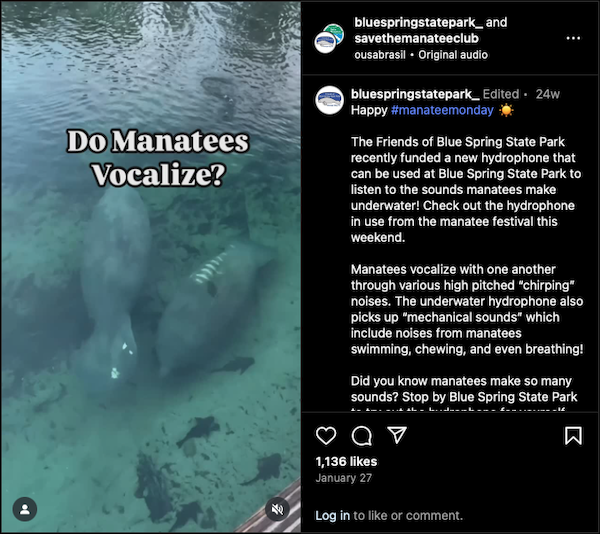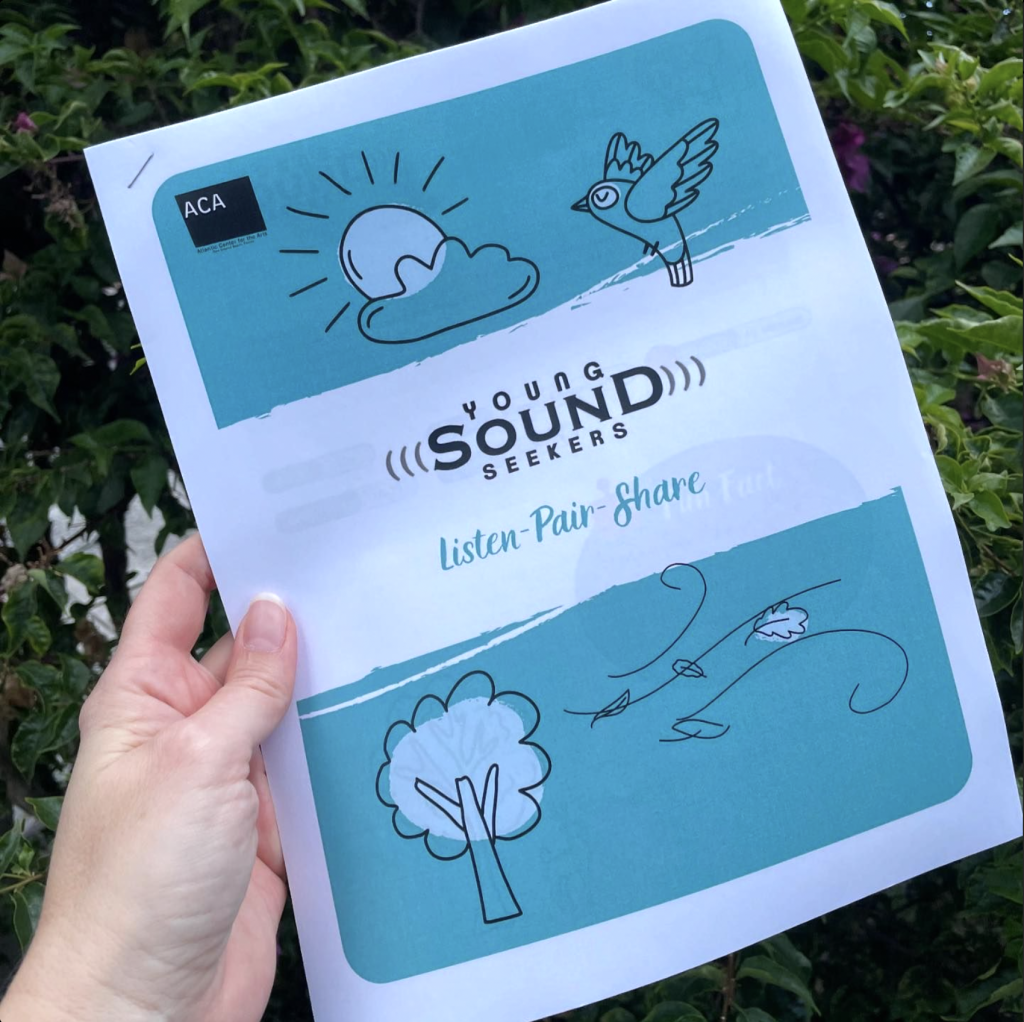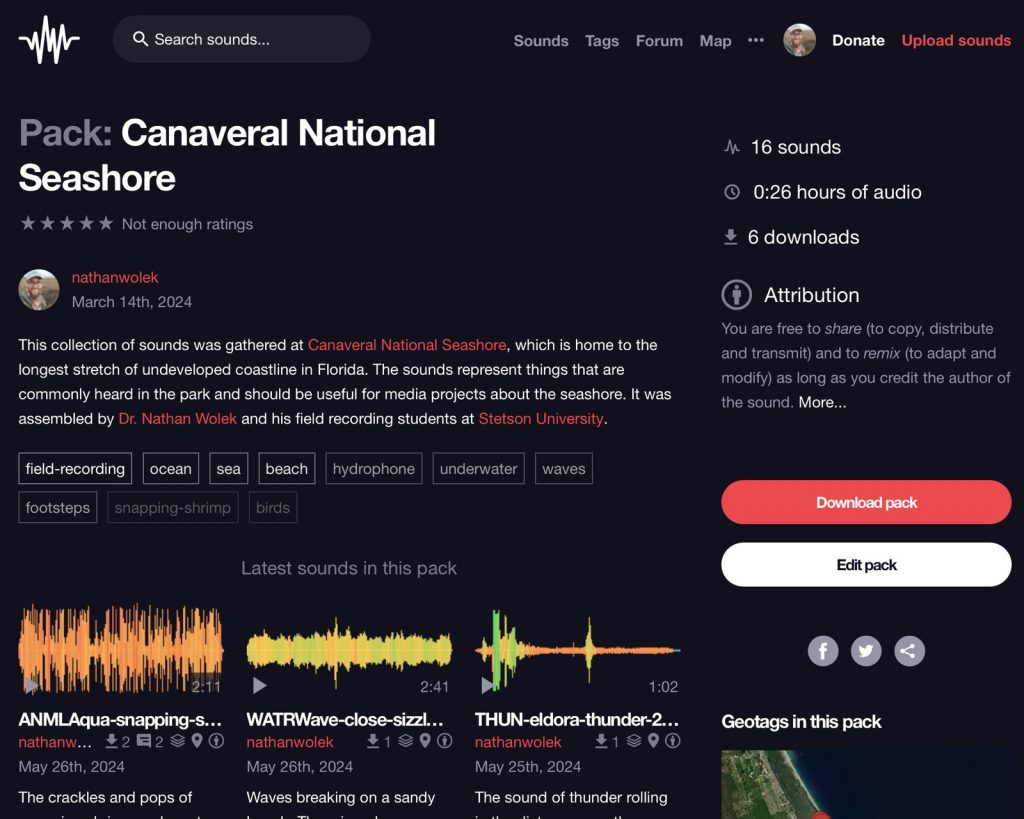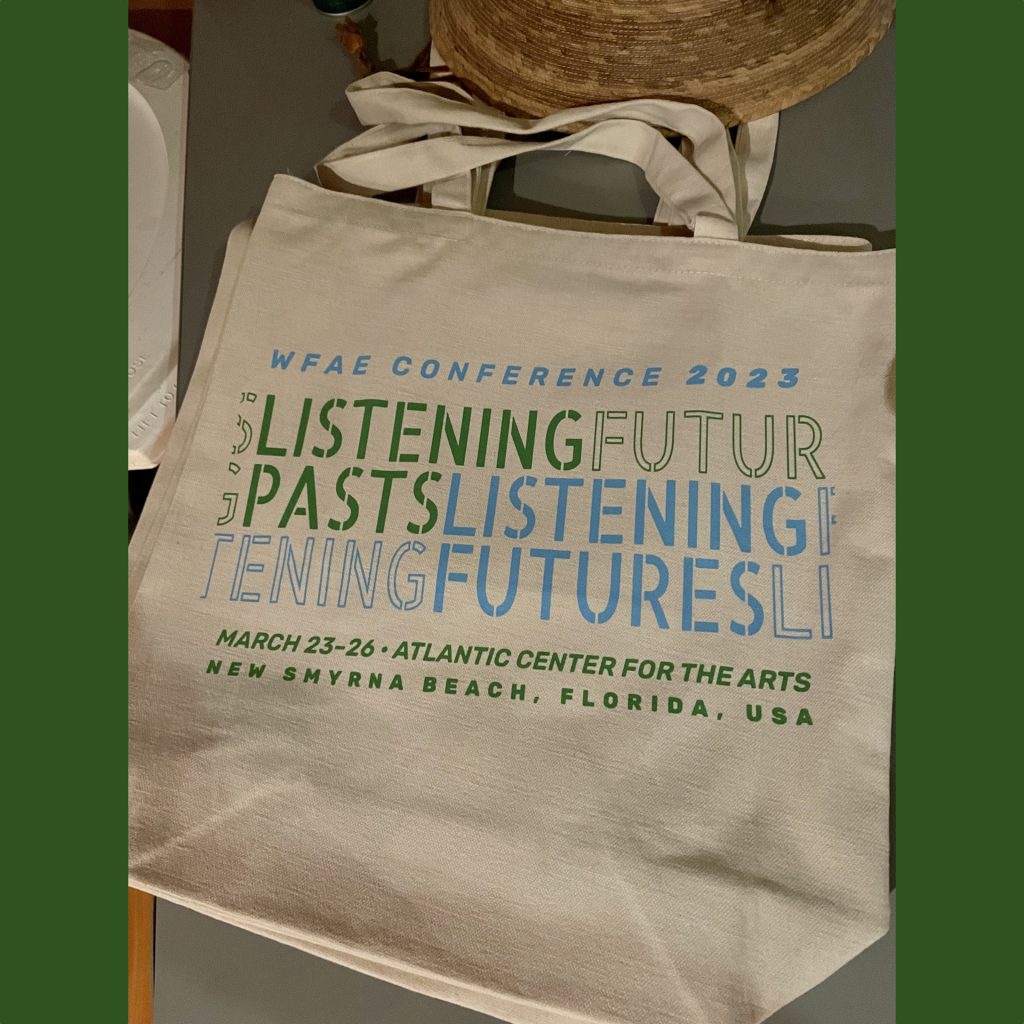Blue Spring hydrophone kit
February 1st, 2025What if visitors could hear manatees in real-time, listening in to their vocalizations during large winter gatherings? Can we design a inexpensive kit so easy to use that park volunteers can manage it with minimal training? These were the question that began a community engagement project with Blue Spring State Park in early 2024.
I’m proud to share the launch of their portable listening system! It’s designed to let park visitors hear underwater sounds in real time, including the vocalizations and feeding activity of manatees, captured in real-time using a hydrophone. Research for this special soundscape experience was originally started by one of my senior students in spring 2024 and carried forward by me into the summer.
The system made its public debut during Blue Spring’s annual festival—and it was clearly a hit! Park rangers reported that over 1,000 visitors used the station over the weekend. The response highlights just how powerful sound can be in helping people connect more deeply with the natural world.
Special thanks to Ranger Connor Wagner and Kay Hallum for their collaboration on this project. The park put together a short video featuring real manatee sounds alongside visuals of visitors using the headphones. Check out the full clip and learn more on Instagram.

Here’s a list of the key items that when into building this kit:



